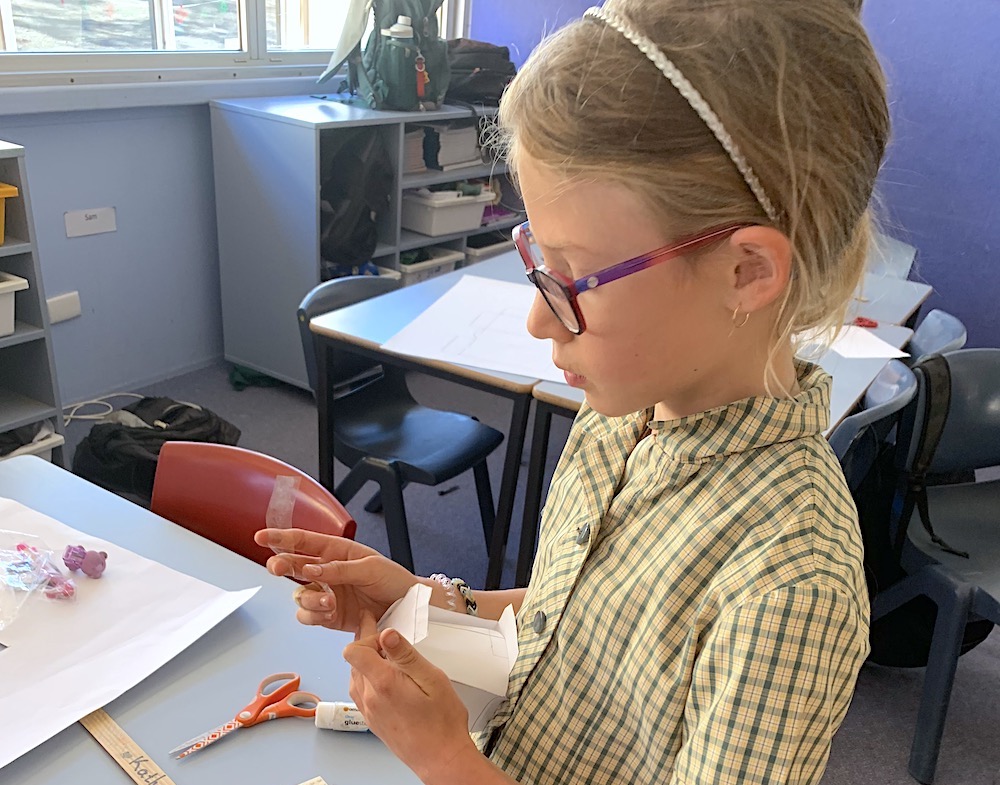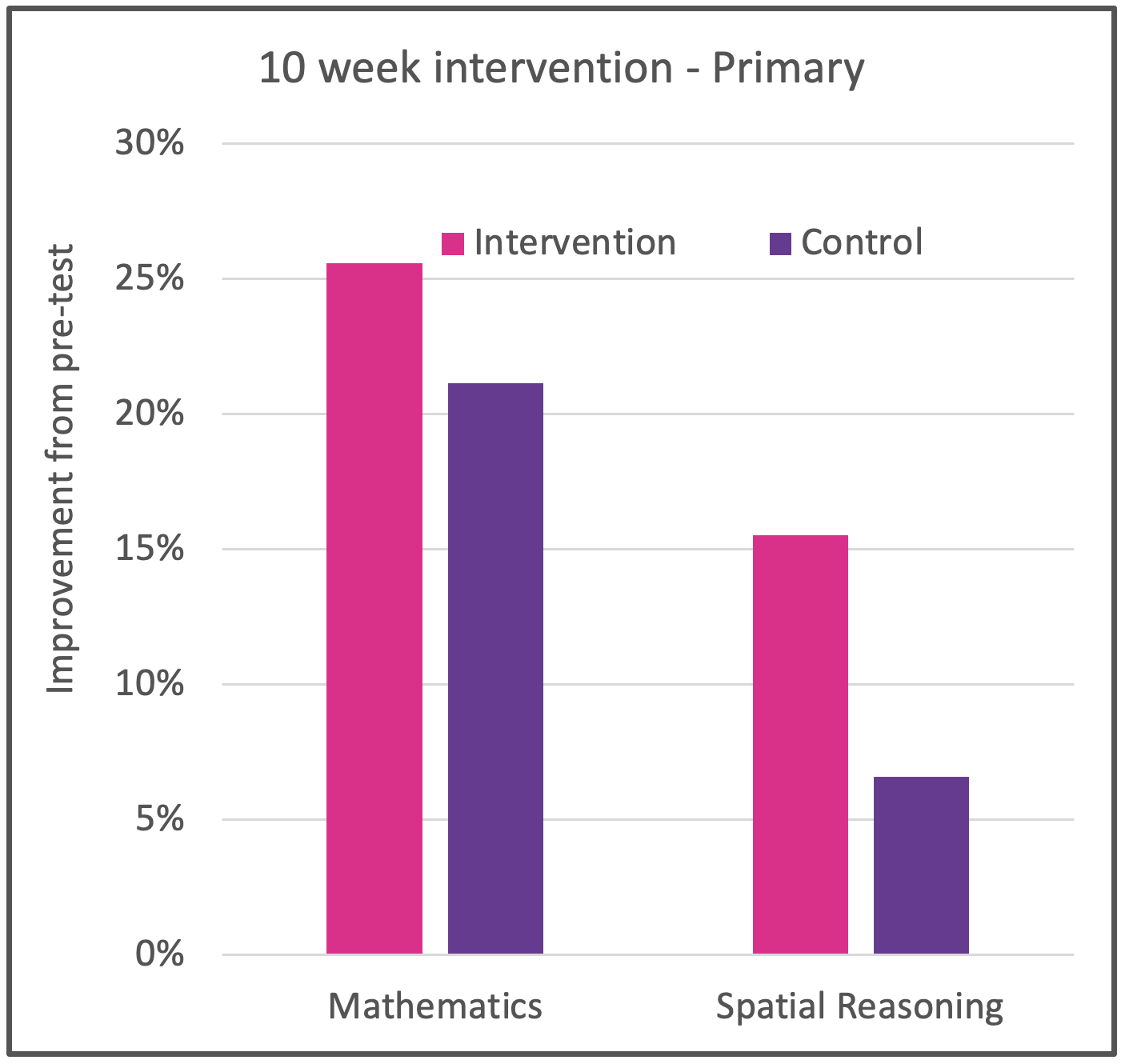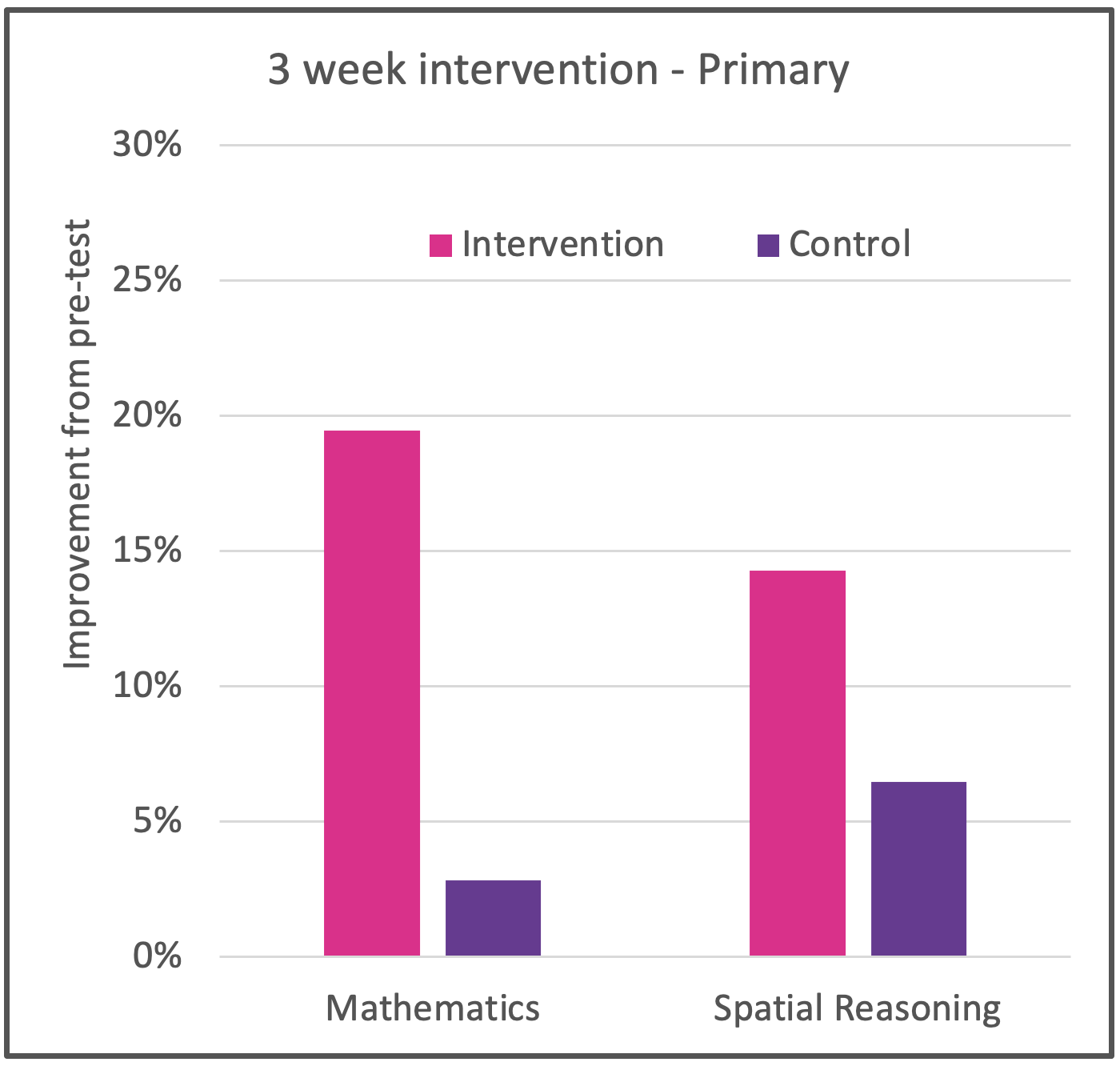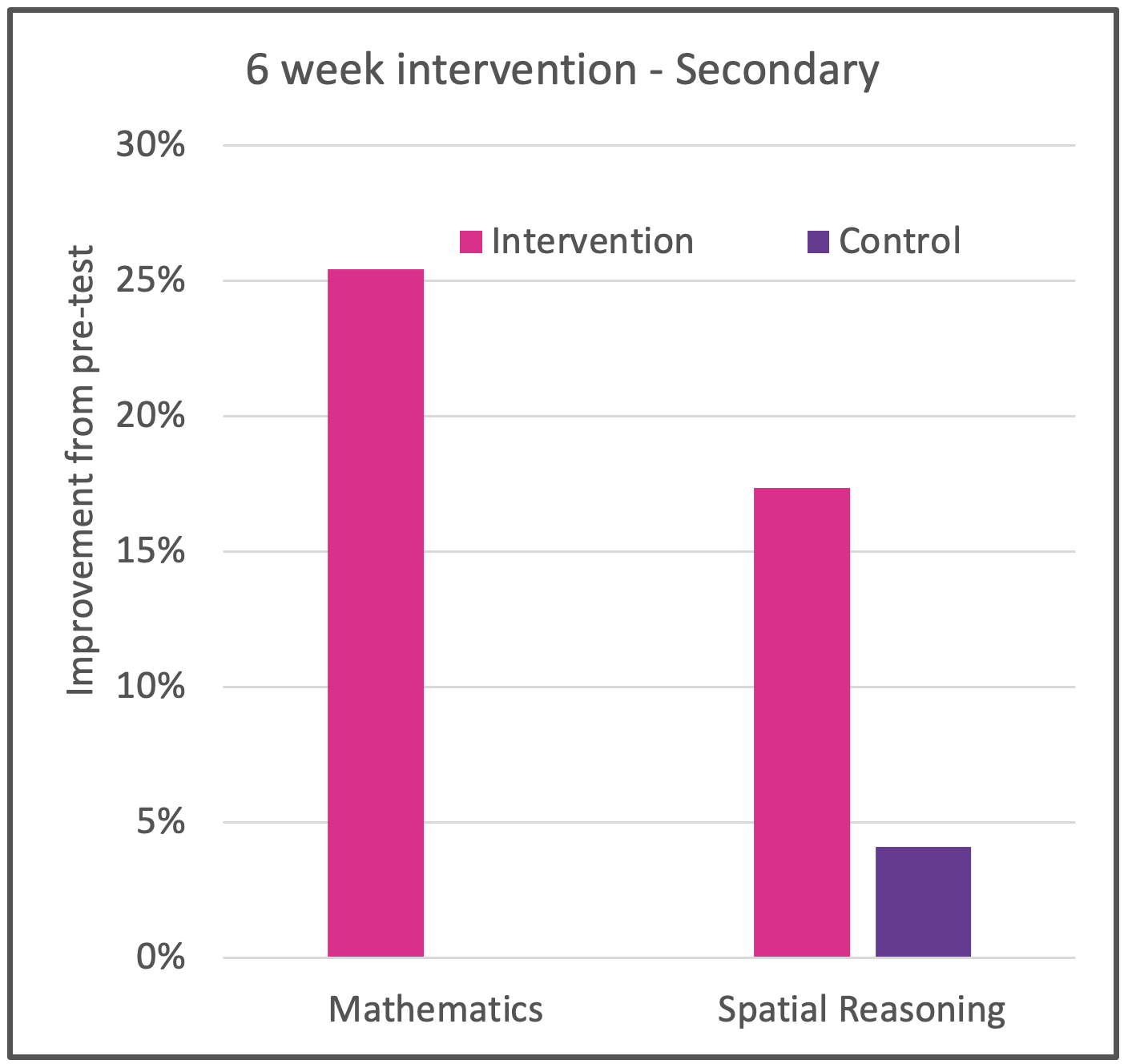Evidence Base

The MathsBURST Program is backed by evidence-based classroom interventions. These studies show significant increases in numeracy performance and spatial reasoning skills for children in varioius year levels. See the charts below for more information.
2019 Intervention
4200 Students
20-hour intervention
Student numeracy performance increased by a mean of 28%
Numeracy instrument = NAPLAN items
Students’ spatial skills improved by a mean of 40%
Math effect size increases by grade [between 0.58 and 0.89]
Spatial effect size increases by grade [between 0.62 and 0.82]

Intervention 1
Impact of this Intervention Program
The first study published in the British Journal of Educational Psychology (Lowrie et al., 2017) immersed students in a spatial environment for ten weeks and resulted in improvements in spatial reasoning and mathematics.
Lowrie, T., Logan, T., & Ramful, A. (2017). Visuospatial training improves elementary Students’ mathematics performance. British Journal of Education Psychology, 87, 170-186.

Intervention 2
Impact of this Intervention Program
A subsequent study, published in the Journal of Cognition and Development (Lowrie et al., 2019) used a three-week intervention, enhanced by digital tools in geographically diverse classrooms.
Lowrie, T., Logan, T., & Hegarty, M. (2019). The influence of spatial visualization training on students’ spatial reasoning and mathematics performance. Journal of Cognition and Development, 20(5), 729-751.

Intervention 3
Impact of this Intervention Program
In the thrid study, the intervention was transferred to a high school setting to assess its impact in year 8 classrooms (Lowrie et al., 2020).
Lowrie, T., Harris, D., Logan, T., & Hegarty, M. (2020). The impact of a spatial intervention program on students’ spatial reasoning and mathematics performance. Journal of Experimental Education, 89(2), 259-277.
Published articles
A selection of relevant research articles published by members of the MathsBURST team since 2018
Lowrie, T., Harris, D., Logan, T., & Hegarty, M. (2020). The impact of a spatial intervention program on students’ spatial reasoning and mathematics performance. The Journal of Experimental Education.
Lowrie, T., Logan, T., & Hegarty, M. (2019). The influence of spatial visualization training on students’ spatial reasoning and mathematics performance. Journal of Cognition and Development, 20(5), 729-751.
Lowrie, T. & Larkin, K. (2019). Experience, represent, apply (ERA): A heuristic for digital engagement in the early years. British Journal of Educational Technology.
Lowrie, T., Logan, T., Harris, D., & Hegarty, M. (2018). The impact of an intervention program on students’ spatial reasoning: student engagement through mathematics-enhanced learning activities. Cognitive Research: Principles and Implications, 3(50), 1-10.
Lowrie, T., Logan, T., & Patahuddin, S. (2018). A learning design for developing mathematics understanding: The ELPSA framework. Australian Mathematics Teacher, 74(4), 26-31.
Patahuddin, S., Lowrie, R., & Lowrie, T. (2018). ELPSA learning design to develop conceptual understandings of algebraic equivalence: The use of ribbons. Australian Mathematics Teacher, 74(4).
PAGES
MAILING LIST
MathsBURST acknowledges the Ngunnawal people, traditional custodians of the lands where we are situated. We wish to acknowledge and respect their continuing culture and the contribution they make to the life of Canberra and the region. We acknowledge the sorrow of the Stolen Generations and the impacts of colonisation on Aboriginal and Torres Strait Islander peoples. We also recognise the resilience, strength and pride of the Aboriginal and Torres Strait Islander communities.

